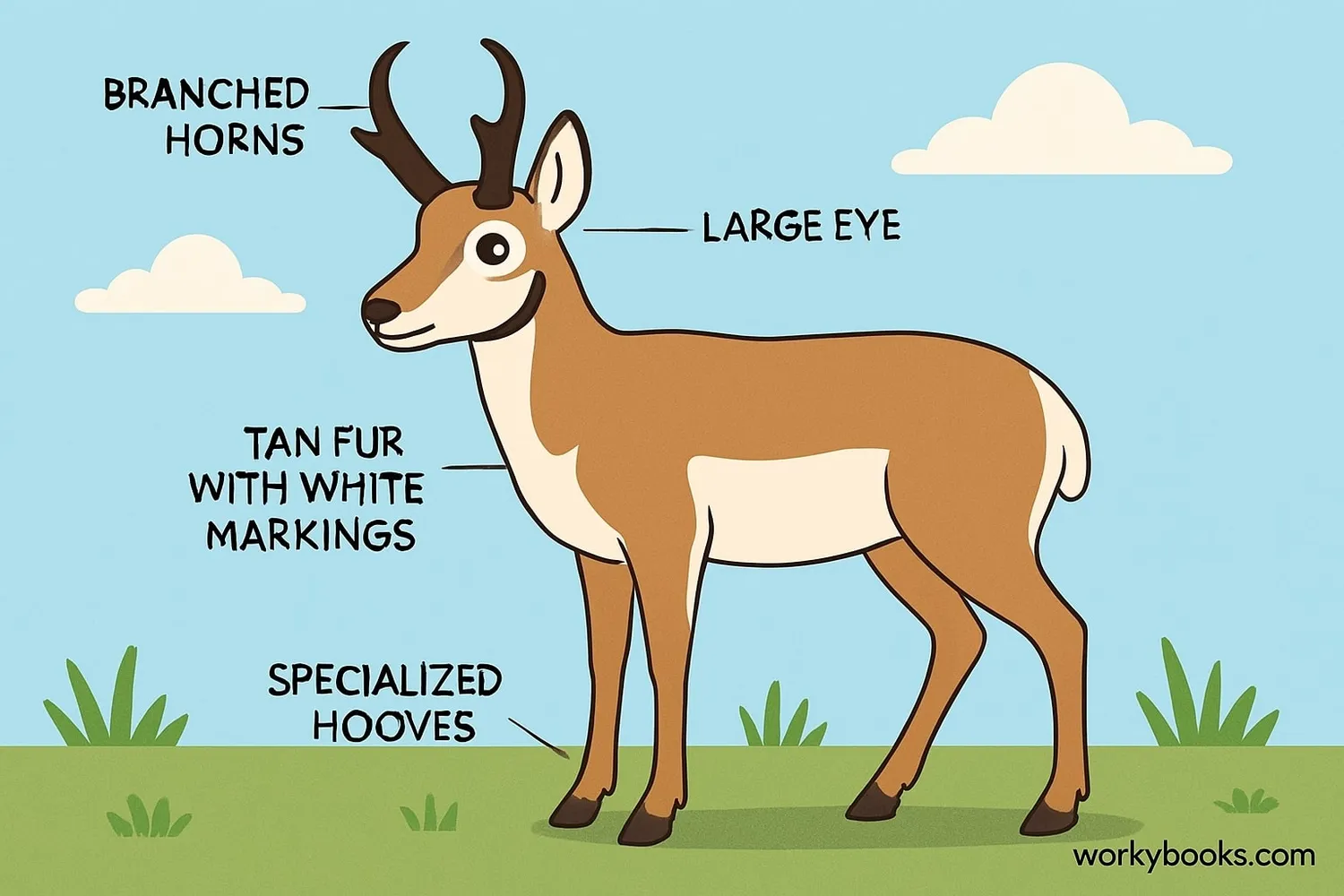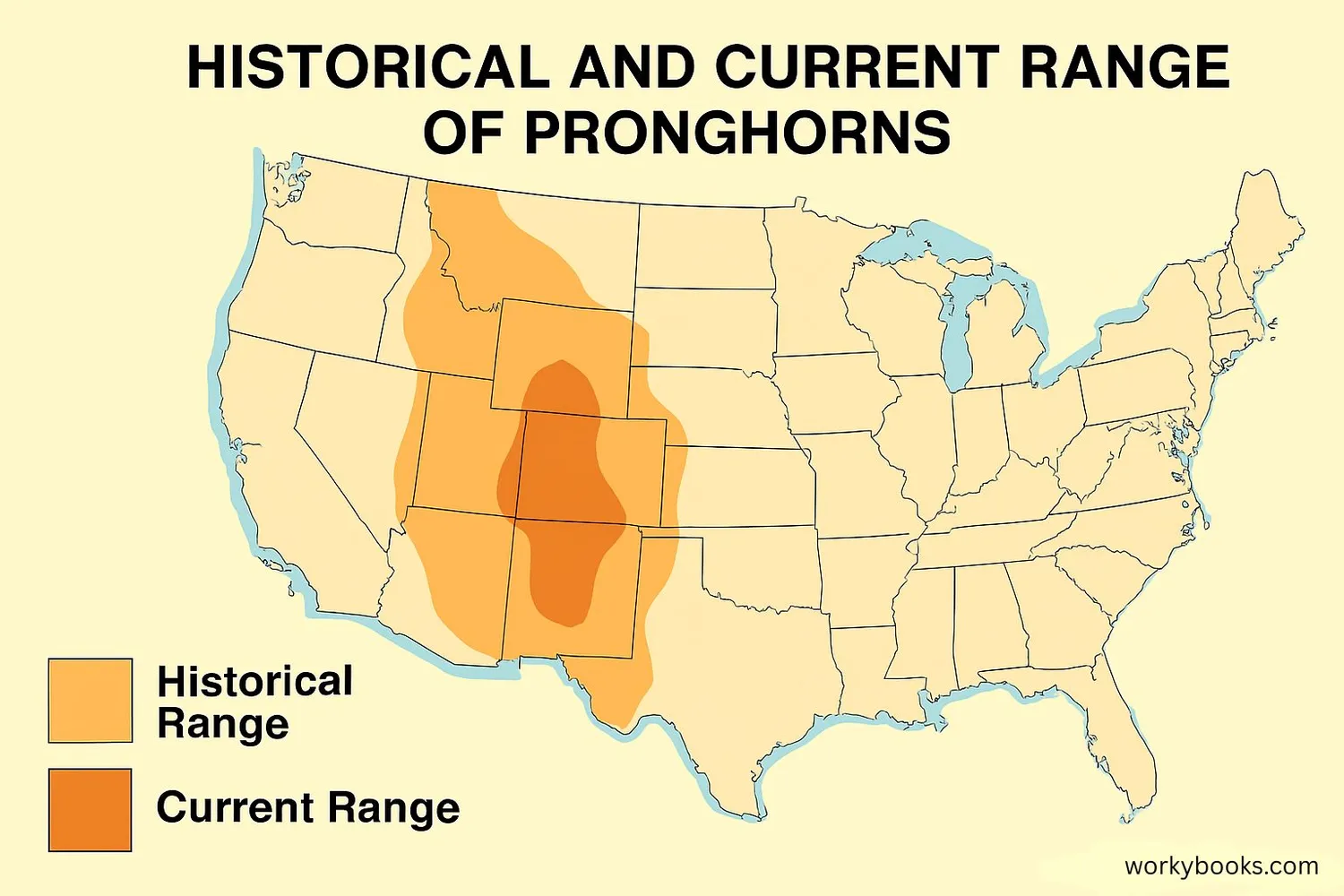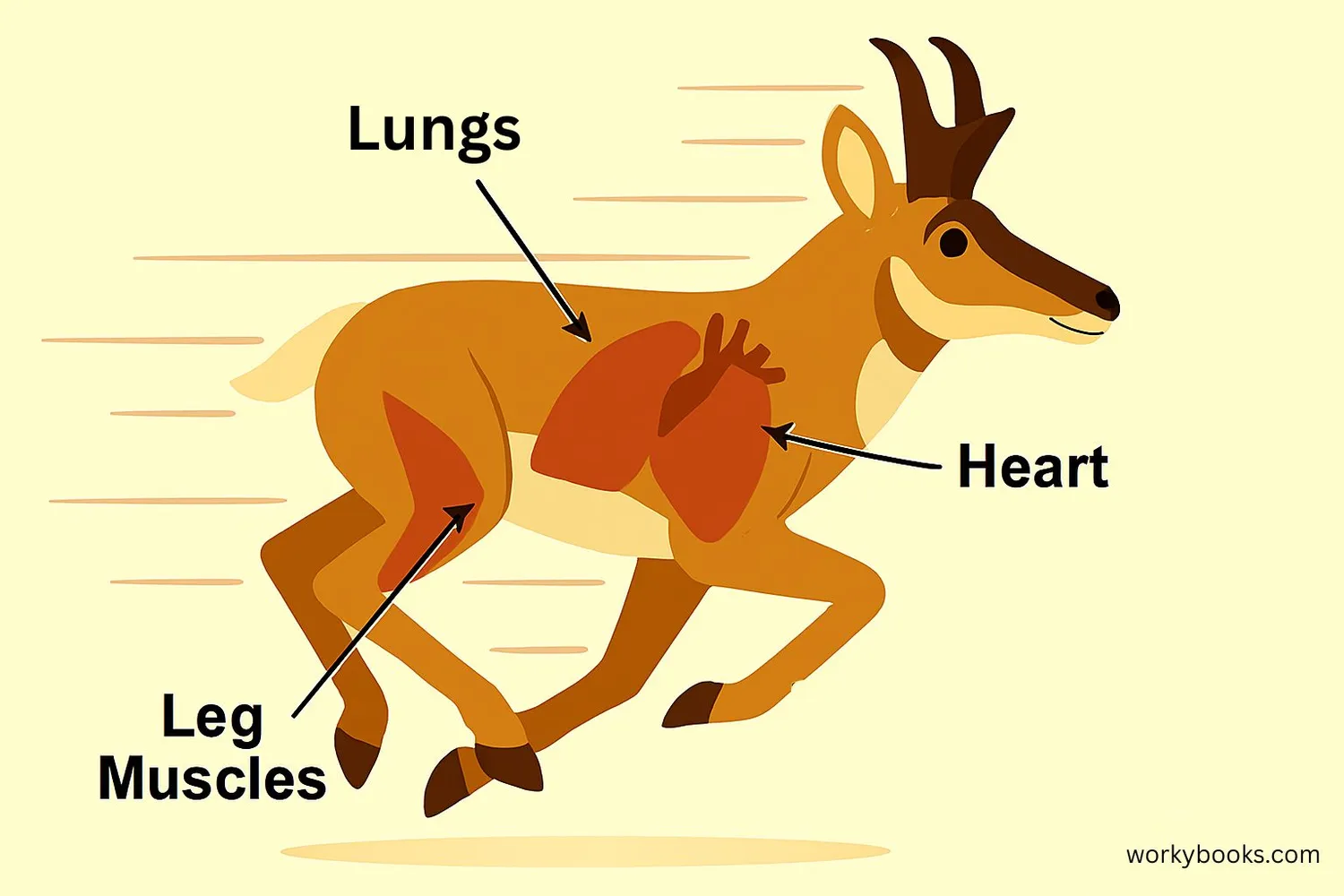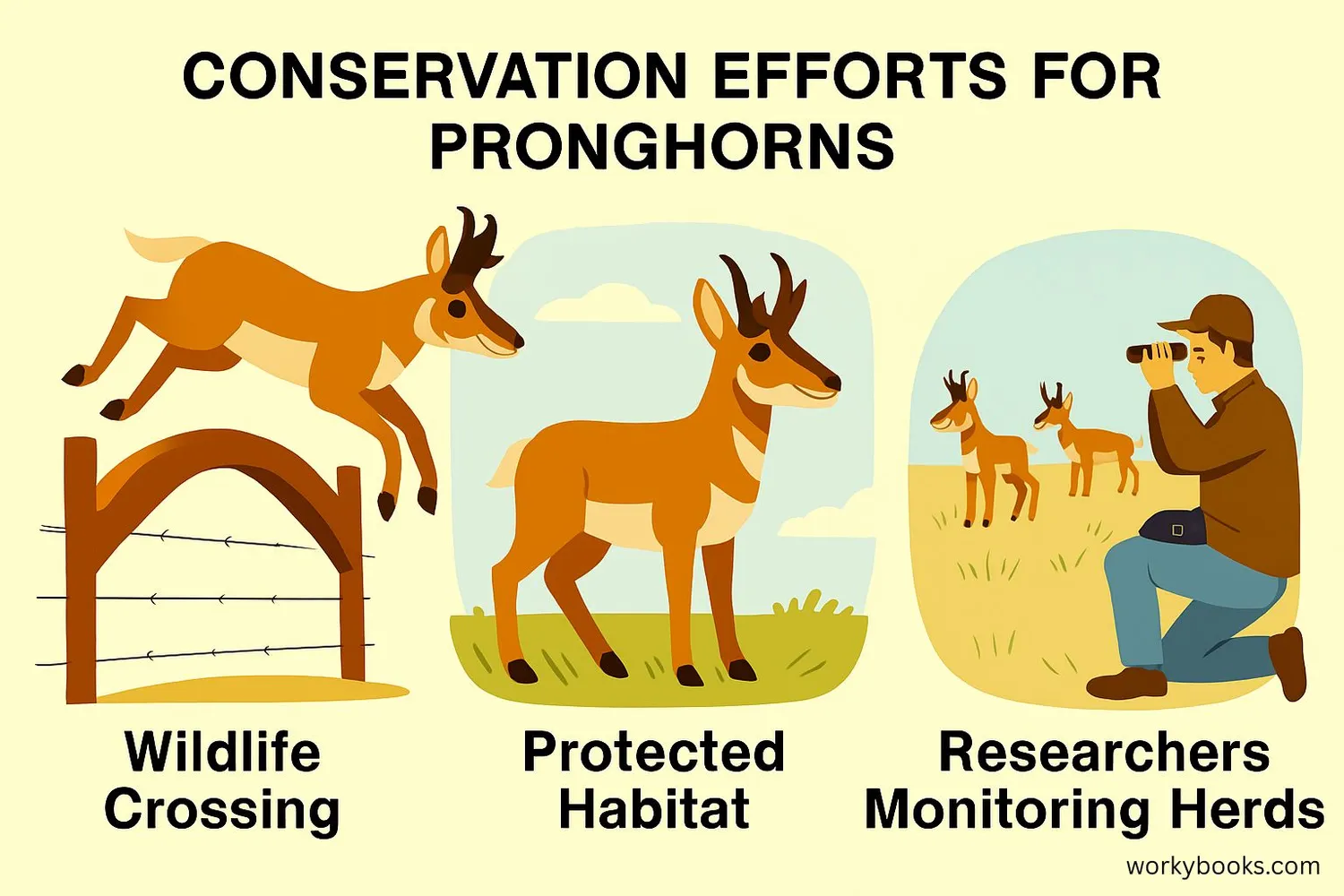Pronghorn - Definition, Examples, Quiz, FAQ, Trivia
Discover the amazing pronghorn - the fastest land mammal in the Western Hemisphere!
What is a Pronghorn?

The pronghorn is a unique North American mammal that looks similar to an antelope but is actually the only surviving member of its own family. These amazing animals are known for being the fastest land mammal in the Western Hemisphere!
Pronghorns can run at speeds up to 60 miles per hour - faster than any predator in North America. They're specially adapted to the wide-open spaces of prairies and deserts, with incredible vision that allows them to spot movement from several miles away.
Did You Know?
Pronghorns are the second fastest land animal in the world, only slightly slower than the African cheetah!
Ancient Origins
Pronghorns evolved during the Ice Age alongside now-extinct predators like the American cheetah.
Size Comparison
Adults stand about 3 feet tall at the shoulder and weigh 90-140 pounds.
Social Animals
Pronghorns live in herds that change size with the seasons - larger in winter, smaller in summer.
Physical Characteristics

Pronghorns have several special features that make them perfectly suited for life on the open plains:
Horns
Both males and females have horns. Males have branched horns up to 20 inches long with a forward-pointing prong.
Coloration
Tan to reddish-brown fur with white markings on the face, belly, rump, and throat.
Eyes
Large eyes positioned on the sides of their head give them nearly 300-degree vision.
Hooves
Two-toed hooves with cushioned pads help absorb impact at high speeds.
Special Fur
Hollow hairs provide excellent insulation against both heat and cold.
Unique Feature!
Pronghorns are the only animal in the world with branched horns that are shed annually like antlers!
Habitat & Range

Pronghorns are native to the wide-open spaces of North America:
Historic Range
Once roamed from Canada to Mexico across the Great Plains and intermountain West
Current Range
Primarily found in western U.S. states and parts of Canada and Mexico
Preferred Habitat
Grasslands, sagebrush plains, deserts with open visibility
Pronghorns require large territories with good visibility to spot predators. They avoid areas with dense forests or steep mountains where their speed advantage is lost. Their habitat must provide:
• Open spaces for running at high speeds
• Low vegetation for spotting predators
• Reliable water sources
• Seasonal food plants
Speed & Adaptations

The pronghorn's incredible speed comes from several specialized adaptations:
Powerful Legs
Long, lightweight legs with elastic tendons act like springs
Large Heart
A heart 3 times larger than a similar-sized sheep's
Oxygen Efficiency
Special lung capacity and blood chemistry for oxygen delivery
Vision
Eyesight equivalent to 8x binoculars to spot distant threats
Stamina
Can maintain 30 mph for several miles - no predator can match this endurance
Speed Comparison
Pronghorns can run:
• 60 mph - top speed (faster than a racehorse)
• 30 mph - sustained speed (faster than a car in town)
Conservation Status

Pronghorns have faced several conservation challenges:
Population Decline
From 35 million before European settlement to just 13,000 by 1915
Fencing Problems
Barbed wire fences block migration routes and cause injuries
Habitat Loss
Development and agriculture have reduced open grasslands
Conservation successes include:
• Population recovery to approximately 1 million today
• Creation of wildlife corridors and migration routes
• Special fencing designs that allow pronghorns to pass under
• Protected areas across their range
The Sonoran pronghorn subspecies remains endangered with only a few hundred individuals in the wild.
Pronghorn Quiz
Test your pronghorn knowledge with this quiz! Answer all 5 questions to see how much you've learned.
Frequently Asked Questions
Here are answers to common questions about pronghorns:
Pronghorn Trivia
Discover amazing facts about these fascinating animals!
Speed Evolution
Pronghorns evolved their incredible speed to escape the now-extinct American cheetah that lived alongside them during the Ice Age.
Super Vision
Pronghorns have vision equivalent to 8-power binoculars! They can spot movement up to 4 miles away - farther than any other North American animal.
Migration Masters
Some pronghorn herds migrate over 150 miles twice a year - one of the longest land mammal migrations in the continental United States.
Fence Solutions
Conservationists create special "wildlife-friendly" fences with smooth bottom wires 18 inches above ground so pronghorns can crawl underneath.


